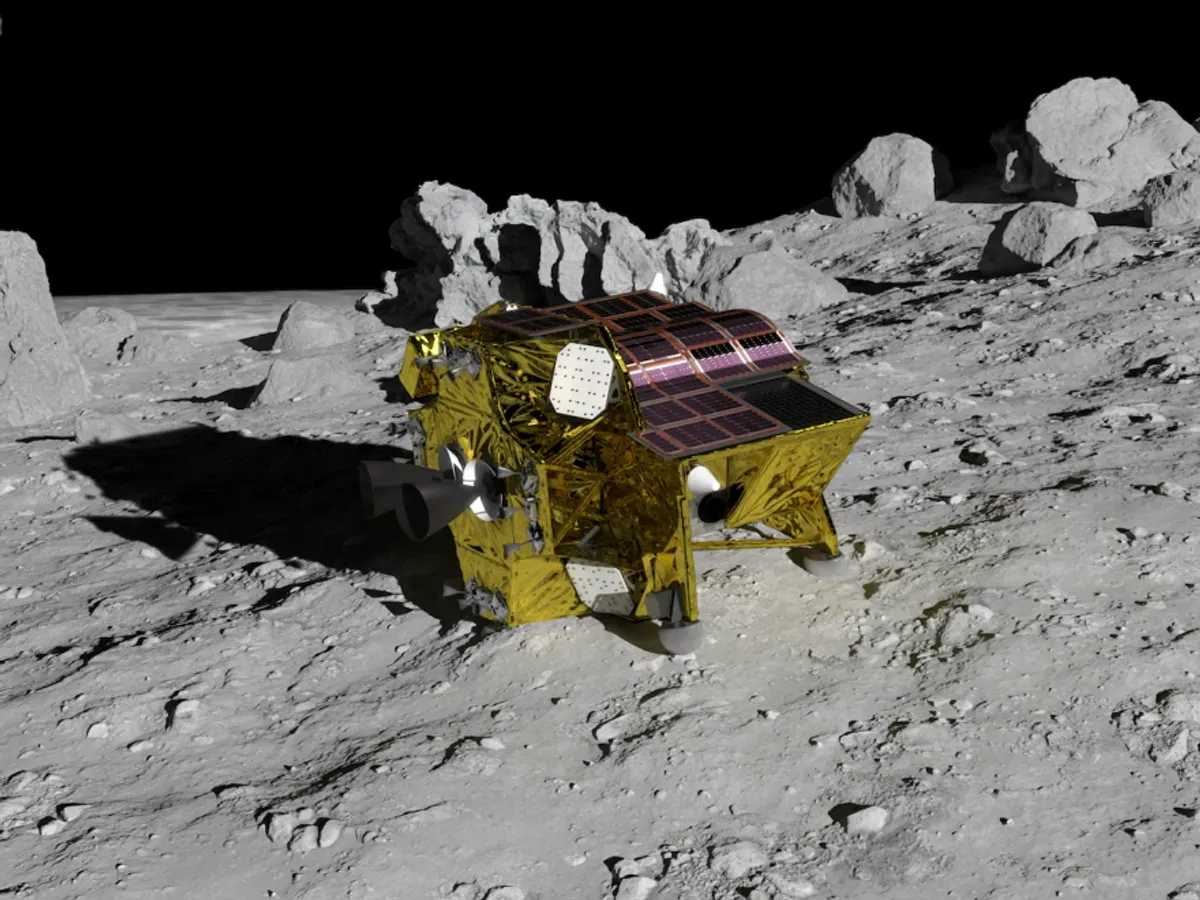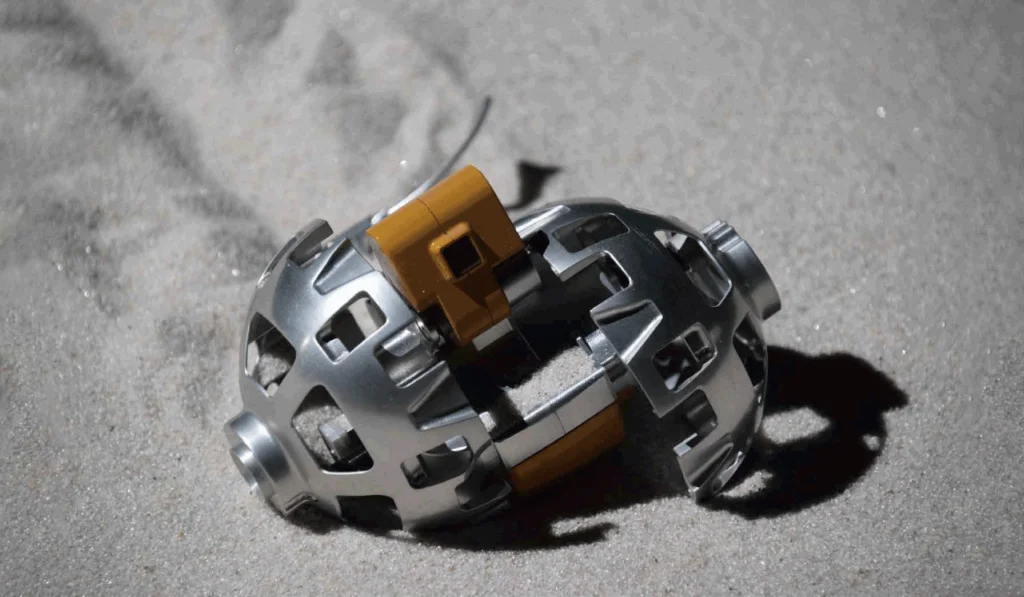For the first time, a Japanese spacecraft managed to land gently on the moon
- January 19, 2024
- 0
By 2024, only four countries’ machines could make a soft landing on the Moon: Russia, the USA, China and India. At the same time, recent attempts of this
By 2024, only four countries’ machines could make a soft landing on the Moon: Russia, the USA, China and India. At the same time, recent attempts of this

By 2024, only four countries’ machines could make a soft landing on the Moon: Russia, the USA, China and India. At the same time, recent attempts of this kind have also ended in disaster. The Japanese space agency ranked fifth on the list of those who achieved this, demonstrating a not inconsiderable high level of proficiency.
The Intelligent Lander for Lunar Exploration (SLIM) was initially planned to be launched in 2021, but in practice this became possible only on September 6, 2023. Unlike many other lunar landers, it used time-consuming orbits, so it only reached near-lunar orbit on December 25. Starting on January 17, 2024, the device began to gradually slow down and the altitude of the flight above Selena decreased. On the 19th, the lower point of this orbit reached 15 kilometers, after which SLIM began to descend on the Earth satellite. He muttered softly.
The device’s landing site is at the 13th degree south latitude of the visible side of the Moon, near the small 300-meter crater Siori, located within the larger Kyrylo crater. This is a sharp departure from last year’s Indian mission, which descended into the moon’s southern subpolar latitudes to better study an area where the soil is potentially water-rich.
The choice of Shiori is due to the fact that the Japanese mission specifically selected a location where it was possible to land safely only with exceptionally high landing accuracy. The fact is that SLIM developers consider the possible size of the landing point for their device to be 100 meters. For comparison: the landing of the last manned lunar modules of the “Apollo” missions entered the landing ellipse of 15 by five kilometers. At the time of landing, the deviation from it was 400 meters, despite the significant experience accumulated by the United States at that time.
So far, the Chinese have landed on the moon with the highest precision: the landing points were six by six kilometers. And they managed to deviate from the center by only 89 meters. The landing point of Chandrayaan-3, which landed last year, was four x 2.5 kilometers but the deviation during landing was 350 meters away from the center point.
The accuracy of the 100-meter landing point should be ensured by the Japanese apparatus not for the sake of prestige, but because future lunar missions are planned in the South Pole region, where very difficult landscapes are located. Huge rocks, slopes, etc. mean that a small error in the accuracy of the landing site could be fatal to the mission. Even lowering the device onto the slope of the Shackleton Crater (due to the steepness of its slopes exceeding 30 degrees) can cause a fall on its side, after which normal operation (and survival) will no longer be possible.
In order to practice landing in such difficult conditions, the Japanese chose an area with a slope of up to 15 degrees (crater slope) for SLIM landing. This is very risky for an apparatus with a “dry” weight of 120 kilograms. In addition to accuracy, it requires quite specific landing legs: they are designed to be deliberately destructive during landing, and the deformation of these aluminum struts must dissipate some of the impact energy.
Additionally, the device uses a unique landing method of falling sideways while hovering in the air. Without this, it would be difficult for him to ensure the correct orientation of the solar panels by the Sun in the conditions of landing on a strongly inclined surface.
To ensure high accuracy, the device will pinpoint its specific location during descent using high-resolution cameras. It makes real-time adjustments to the operation of the descent engines by comparing the data from them with maps of the lunar surface in its memory. Such a task was extremely difficult because the performance of the onboard computer required for this is very high, and an overly productive computer consumes a lot of energy.
The payload of the device includes not only devices for analyzing the composition of the lunar soil at the landing site, but also two lunar rovers. Moreover, the first of these, Lunar Rover 1, has a unique design. It would be more accurate to call this a “lunar bounce” since it should move in leaps across the surface of the satellite. This is an extremely useful technology because, as Naked Science has previously noted, standard rovers have extremely low efficiency. Moreover, this problem is almost impossible to solve in wheeled or even tracked machines (the regolith of the Moon and even Mars have very special properties).

Meanwhile, important scientific results often require venturing into the most rugged terrain; for example, the steep slopes of craters where the sun’s rays do not reach and where more light elements are preserved (down to permafrost soils). Wheeled tracked vehicles are in principle unsuitable for entering open parts of large lunar caves (lava tubes), but “lunar jumps” are potentially suitable due to low local gravity. Of course, the instrument payload and energy capacity of the first jump to the Moon will be limited; It just needs to show consistent movement on the slopes.
The second lunar rover on board, Lunar Rover 2, is much more exotic in some respects. Its mass is 250 grams, and according to its initial shape, it is a ball with a diameter of eight centimeters. Due to moving parts, the lunar rover can change its shape and move in regolith for up to two hours (in which case the battery runs out). The developer of this rather unusual product was a Japanese manufacturer of children’s toys.
Source: Port Altele
As an experienced journalist and author, Mary has been reporting on the latest news and trends for over 5 years. With a passion for uncovering the stories behind the headlines, Mary has earned a reputation as a trusted voice in the world of journalism. Her writing style is insightful, engaging and thought-provoking, as she takes a deep dive into the most pressing issues of our time.